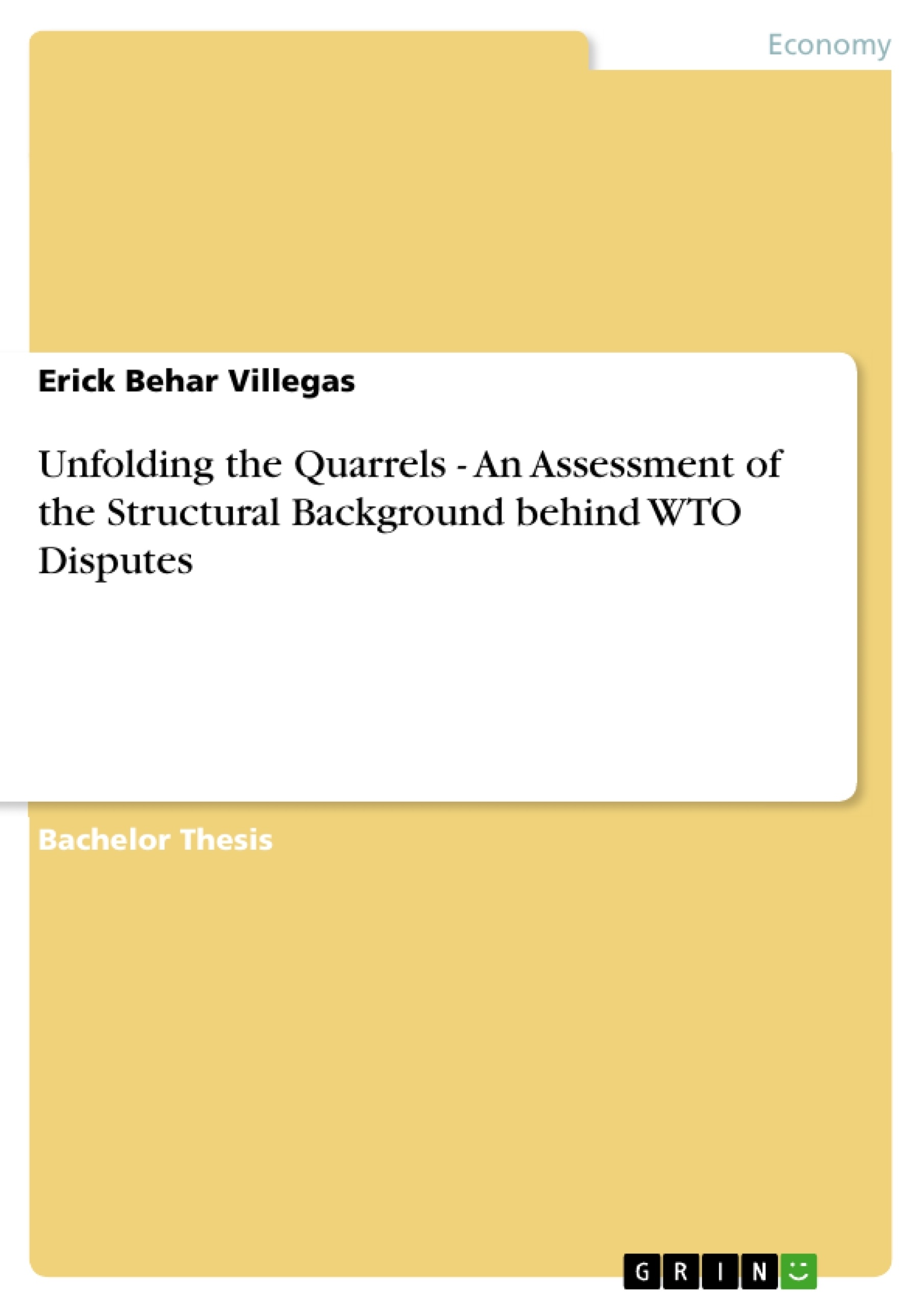International trade has soared in the last 30 years, and conseauently trade disputes have also been on the rise. The Dispute Settlement Body of the WTO serves as plattform in order to attenuate hurdles and misunderstandings. But what makes a country use the DSB? Both underlying structural variables and game theory related variables explain this. While the latter is held constant, this paper inquires in the influence played by structural variables such as GDP, population size, exports, etc, in order to determine why some countries tend to use the DSB and others don't. An index is then proposed to assess the procedural success of countries having participated in the DSB.
Key words: WTO, DSB, international trade, procedural success, imports, exports.
Inhaltsverzeichnis (Table of Contents)
- Introduction
- The Dispute Settlement Understanding: The Backbone of the trading system?
- General Overview
- A Brief History
- The Dispute Settlement Procedure in Brief
- The ups and downs of the DSU
- Positive Changes and Progress
- Criticism and Weaknesses
- The Structural Background of Dispute Settlement: What makes Members request Consultations?
- Possible questions and approaches to Dispute Settlement
- Subjective and Objective Elements
- A Simple Model
- Country Selection Criteria
- Variables and Model Specification
- Findings
- First Findings and Econometric Problem Discussion
- Second Findings after Adjustments
- Preliminary Conclusions
- The Aftermath of Dispute Settlement: Winners and Losers?
- DSP: The Tip of the Iceberg
- A Measurement of Success in Dispute Settlement
Zielsetzung und Themenschwerpunkte (Objectives and Key Themes)
This paper examines the structural background behind disputes within the World Trade Organization (WTO). Its aim is to analyze factors that influence the initiation of disputes and assess the effectiveness of the Dispute Settlement Understanding (DSU) for different member countries. The study explores the relationship between economic factors, trade dependence, and the likelihood of initiating a dispute. It also investigates the potential differences in outcomes for developing and developed countries. Key themes include:- The role of the Dispute Settlement Body (DSB) in promoting a stable and credible trading system
- The structural factors that influence countries' decisions to initiate disputes
- The impact of economic factors, trade dependence, and national size on dispute initiation
- The measurement of success in dispute settlement and its potential implications for different member categories
- The challenges and limitations of the DSU in achieving its intended objectives
Zusammenfassung der Kapitel (Chapter Summaries)
- The paper begins by outlining the historical development of the DSU and its significance in international trade. It discusses the debate over its effectiveness and the growing number of disputes in the context of globalization and trade dependence.
- Chapter 2 delves into the DSU, providing a general overview of its structure, history, and procedure. It also examines criticisms and weaknesses of the system.
- Chapter 3 explores the structural factors behind dispute settlement, examining the motivations for countries to initiate consultations. It develops a model to analyze the relationship between country characteristics and dispute initiation, considering factors like economic size, trade dependence, and other relevant variables.
- Chapter 4 investigates the outcomes of dispute settlement, considering the potential for winners and losers based on different member categories. It delves into methods for measuring the success of the DSU and its impact on different countries.
Schlüsselwörter (Keywords)
The main keywords and focus topics of this work include the Dispute Settlement Body, Dispute Settlement Understanding, international trade, WTO disputes, economic factors, trade dependence, country size, dispute initiation, success in dispute settlement, developing countries, OECD members, and globalization.- Arbeit zitieren
- Erick Behar Villegas (Autor:in), 2009, Unfolding the Quarrels - An Assessment of the Structural Background behind WTO Disputes, München, GRIN Verlag, https://www.grin.com/document/147385



